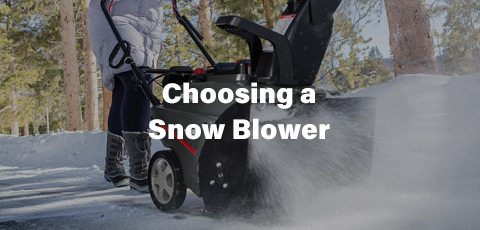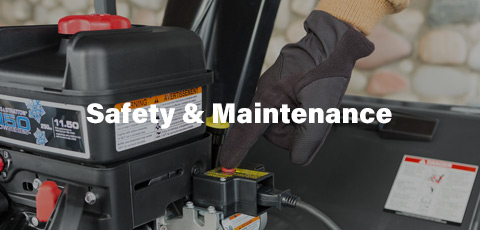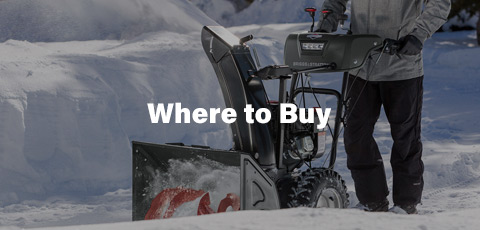You’ve invested in a new snow blower, make sure you are getting the most out of it. Proper snow blower maintenance and storage is essential to keep it running like new for years to come.
Safety
Keep proper snow blower safety in mind, as it will not only keep your snow blower running properly, but can also prevent injury. Here are some of our top safety and maintenance tips to get you started:
- Learn to properly use your machine by reading the snow blower operator's manual.
- Check the oil before using your snow blower.
- Only add fuel before using your snow blower or after waiting for the engine to cool down (about two minutes); do not add fuel while the machine is in use or hot.
- Only operate/turn on your snow blower outdoors, this includes your closed garage to avoid carbon monoxide hazards.
- Take breaks or stop when needed, especially if you are at higher risk for heart problems. Some risk factors include existing heart conditions or other health conditions, being a smoker, sedentary lifestyle, family history, age, etc.
- Before you begin using your snow blower, clear the area of any objects or debris that could get caught in your machine or thrown.
- Dress appropriately to stay warm and protected from winds and blowing snow.
- If snow blower becomes clogged, first make sure the engine is turned off before doing anything. Next, make sure the blades have stopped rotating before trying to clear the clog, and lastly, always use a clean-out tool to remove snow from the discharge chute. Never use your hands or feet. Remember that a clogged auger will have residual energy that can trap your hands even when it is turned off.
Maintenance
Regular maintenance and a seasonal tune-up will help your snow blower perform at its peak. Avoid future problems with this snow blower maintenance checklist:
Storage
Properly storing your snow blower in the off season ensures that it will be ready for next season's snow.

- When storing your snow blower, fill your tank to the top with fresh, stabilized fuel. Filling the tank helps prevent moisture from condensing in your fuel tank, and stops rust and scale before it starts.
- Run your snow blower for five minutes so the stabilized fuel can circulate throughout the engine’s fuel system. Using fuel stabilizer eliminates the need to drain fuel prior to storage and ensures quick easy starts next season by preventing gum and varnish build-up.
- If your snow blower is equipped with a fuel shut-off, always switch off the fuel flow whenever you transport your machine. This will protect the carburetor from flooding and help prevent fuel spills.
- If necessary, perform an oil change.
- Carefully wash and hand-dry your snow blower at the end of the winter. Road salts can damage your snow blower the same way they corrode a car’s exterior.
Consult your Briggs & Stratton manual and a licensed dealer for recommendations and safety tips specific to your snow blower.
For more information, reference our snow blower repair & maintenance guide.









